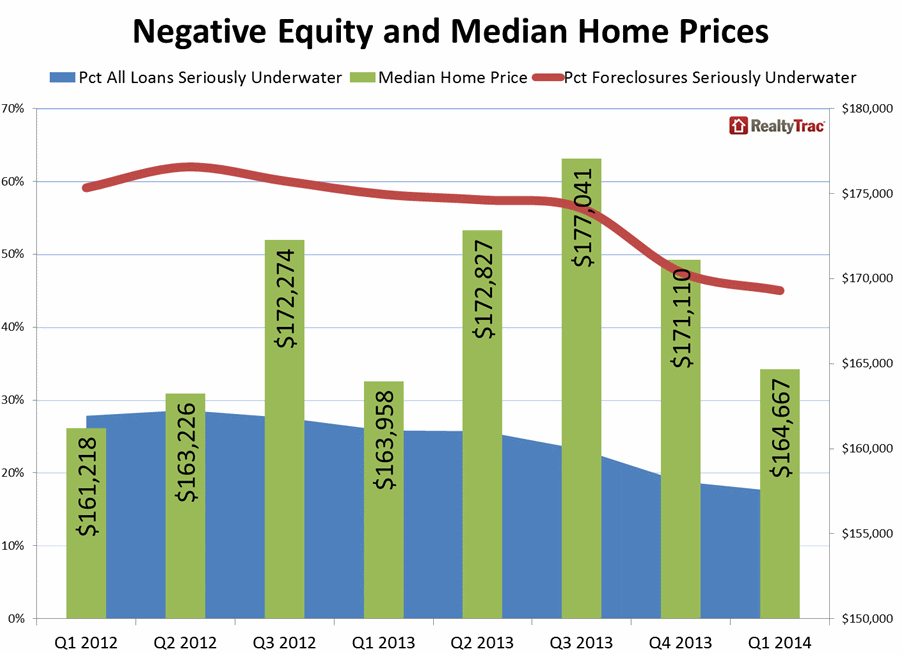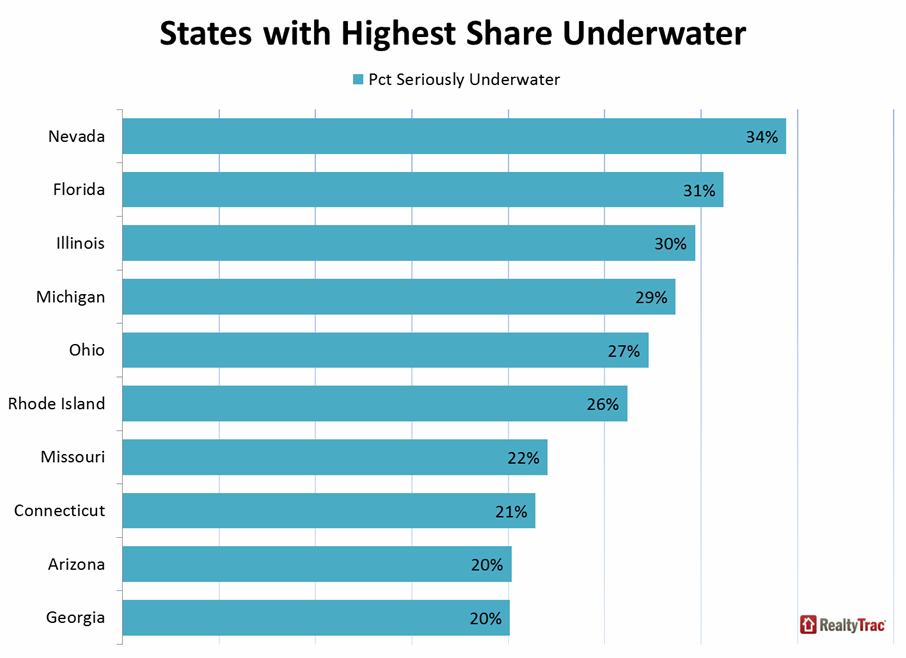Blog

Homes in Foreclosure Increasingly have Positive Equity
Homes with serious negative equityrnnumbers have now declined to the lowest point in at least two years RealtyTracrnsaid today. The company, which beganrntracking so-called underwater properties in the first quarter of 2012,rnestimates that in the first quarter of 2014 9.1 million U.S. homes had loan balancesrnat least 25 percent higher than the properties market value or a loan-to-valuernratio (LTV) of 125 percent. This is 17rnpercent of all U.S. properties with a mortgage.</p
In the fourth quarter of 2013 RealtyTracrnsaid there were 9.3 million properties or 19 percent of mortgaged homes thatrnwere that seriously underwater and in the first quarter 2013 there were 10.9rnmillion or 26 percent. The recent peak in negative equity was the second quarter ofrn2012, when 12.8 million U.S. residential properties representing 29 percent ofrnall properties with a mortgage were seriously underwater.</p
Withrnthe rapid growth of home values in 2013 another 8.5 million homes were close emergingrninto positive territory in the first quarter with between 90 percent and 110rnpercent loan-to-value ratios. Thatrnnear-equity group represented 16 percent of mortgaged homes and had grown fromrn8.3 million properties in the fourth quarter of 2013.</p
“U.S. homeowners are continuing tornrecover equity lost during the Great Recession, but the pace of that recoveringrnequity slowed in the first quarter, corresponding to slowing home pricernappreciation,” said Daren Blomquist, vice president at RealtyTrac. “Slowerrnprice appreciation means the 9 million homeowners seriously underwater couldrnstill have a long road back to positive equity. </p
 </p
</p
Thernpercentage of properties in foreclosure that had negative value declined fromrn48 percent in the fourth quarter to 45 percent in the first while those with positivernequity increased to 35 percent from 31 percent. </p
“The relatively high percentage ofrnforeclosures with equity is surprising to many because it would seem homeownersrnwith equity could easily avoid foreclosure by leveraging that equity byrnrefinancing or with an equity sale of the home,” Blomquist noted. “But manyrndistressed homeowners with equity may not realize they have equity and in somerncases have vacated the property already, assuming that foreclosure isrninevitable.”</p
The states with the highestrnpercentage of residential properties seriously underwater in the first quarterrnwere Nevada (34 percent), Florida (31 percent), Illinois (30 percent), Michiganrn(29 percent), and Ohio (27 percent). Thernmetro areas with high levels of negative equity were Las Vegas (37 percent),rnLakeland, Florida., (36 percent), Palm Bay-Melbourne-Titusville, Florida (35rnpercent), Cleveland (35 percent), Akron (34 percent), and Detroit (33 percent).</p
 </p
</p
Whatrnthe company refers to as “equity-rich properties,” those with a least 50rnpercent equity, now total 9.9 million or 19 percent of mortgaged propertiesrncompared to 9.1 million or 18 percent in the fourth quarter of 2013. The metro areas with the highest percentagernof equity rich homes were San Jose, (39 percent), Honolulu (35 percent), SanrnFrancisco (35 percent), Poughkeepsie, (34 percent), and Los Angeles (32rnpercent).
All Content Copyright © 2003 – 2009 Brown House Media, Inc. All Rights Reserved.nReproduction in any form without permission of MortgageNewsDaily.com is prohibited.
Latest Articles
By John Gittelsohn August 24, 2020, 4:00 AM PDT Some of the largest real estate investors are walking away from Read More...
Late-Stage Delinquencies are SurgingAug 21 2020, 11:59AM Like the report from Black Knight earlier today, the second quarter National Delinquency Survey from the Read More...
Published by the Federal Reserve Bank of San FranciscoIt was recently published by the Federal Reserve Bank of San Francisco, which is about as official as you can Read More...

Comments
Leave a Comment